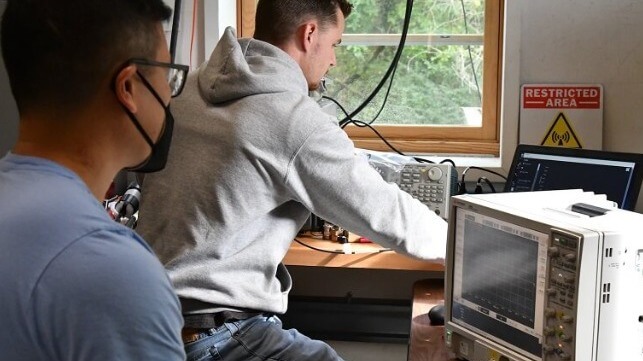U.S. Navy Sets Up R&D Division Dedicated to Microwave Weapons

Following growing demand and funding for developing directed-energy weapons for use at sea, Naval Surface Warfare Center Dahlgren Division has decided to set up the U.S. Navy's first dedicated program for high-power microwave (HPM) systems. It is one of only two such programs in the U.S. military.
Historically, the Navy's R&D establishment has pursued HPM weapons research alongside laser weapons systems, since they have complementary technology requirements. At Dahlgren, both tracks were housed under a single directed-energy weapons department. During a recent review, the center's leadership made the decision to split them into two different divisions, optimizing to meet the need for continued growth and development in both areas.
“HPM and lasers work in parallel in a lot of areas,” said the head of Dahlgren's new HPM Weapon Systems Division Kevin Cogley, who spent several years working with high energy lasers before making the move to lead the new microwave division.
"In HPM, we can have a range of effects on target – from basically jamming a device to physically destroying electrical systems,” he said. “HPM is very different than many other weapon systems because in many cases you may not see any outward physical effects during an engagement but will see nearly-instant results on the target’s operational performance. Using HPM, we can give our sailors a capability that could be a desirable alternative to firing a kinetic weapon.”
Both high energy lasers and HPM projects require significant development costs, but “the cost per shot is pennies” instead of the multi-million-dollar cost of a missile. “When you look at a historically kinetic weapon system, DE brings a wealth of benefits in terms of magazine depth. We can keep shooting as long as there is power," he said.
Over the last five years, directed-energy weapons have been a high-level priority for the Office of the Secretary of Defense, with funding for R&D roughly doubling over the period. Dahlgren expects that splitting high-energy laser systems and HPM will set its work ahead of the curve. It is one of two places in the country with a specific HPM division, alongside the Air Force Research Lab in New Mexico. The two centers collaborate on the largest HPM projects in the country, including offense applications, counter unmanned aerial systems and integrated air defense topics.
